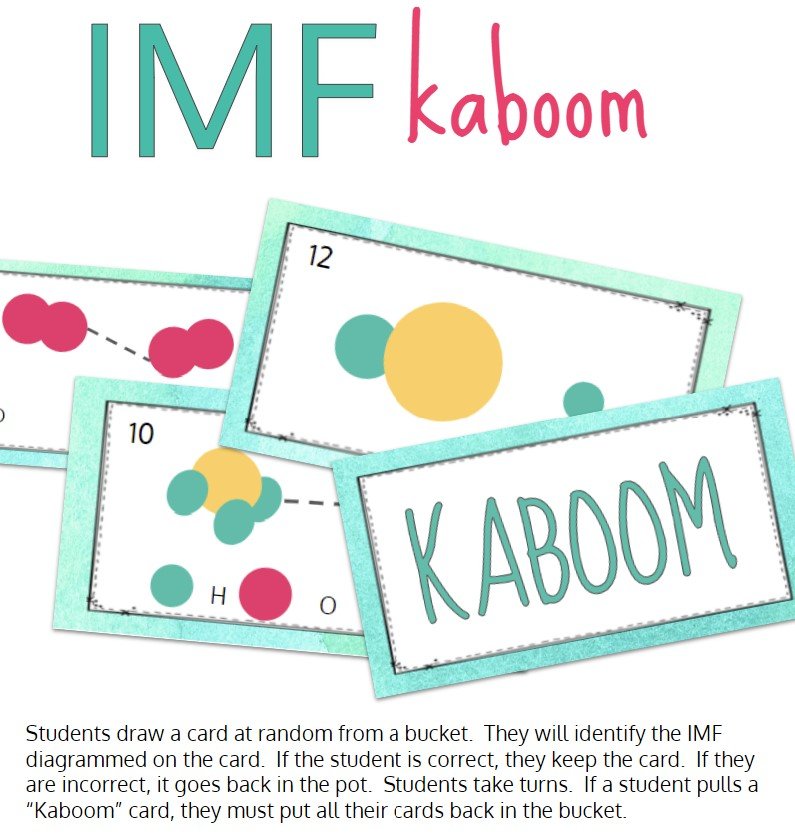Chemistry Kaboom
Kaboom is a quick and engaging game you can play with students to cover a variety of content. Typically, Kaboom is used in lower grade levels, but that doesn’t mean that it cannot be in your toolkit for high school chemistry classes.
In this post, I am going to explain the card game Kaboom, and how it can be used in high school chemistry for practice of content.
How to Play Kaboom
Playing Kaboom is pretty easy. You need a set of cards (per team) that includes both content and Kaboom cards as well as some sort of bucket or bin.
Students shuffle cards and place the cards in a bucket or bin.
The student who starts will pull a card from the stack. If they get the card correct, they get to keep the card. If they are incorrect, they put the card back in the card stack somewhere.
Other students on the team can check the work of the current player to verify and make sure that player gets to keep the card.
You can also post a key around the room for students to check if they are unsure.
The next students pulls a card, and play continues. If they are correct, they keep the card. If they are incorrect, they put the card back in the stack.
If a student pulls a KABOOM card from the pile, they must put back ALL of the cards they have collected up to that point.
The student with the most cards at the end of the game is the winner!
Chemistry Kaboom
If you want to incorporate Kaboom into your chemistry classes, you will need to make a set of cards centered around one topic or idea. I usually have somewhere around 30 cards per topic, plus 6 Kaboom cards.
Once your cards are created, you would print and laminate enough sets as you want teams. I have 6 lab tables (where students also sit for class-no separate desks unfortunately), so I copy 6 sets.
Currently, I have created Kaboom sets centered around the following:
Interpreting IMF from diagrams. I used this IMF Kaboom set with AP Chemistry, and created a set of cards that had diagrams (or molecules) that students had to interpret and identify intermolecular forces.
Naming Kaboom. I used this set with my first year chemistry students when learning naming of ionic and covalent compounds. Students pull a formula from the stack and name the binary compound.
There are probably many more topics you could use Chemistry Kaboom with, although it probably would not work with math problems. I would recommend sets that require students to identify or interpret. Here are some other ideas that could work for Chemistry Kaboom:
shapes and bond angles
polarity of molecules
types of reactions
chemical and physical changes
solutions
If you want to create a key for students to check, number your cards to make it easier for them to find the answer. If you prefer to not make your own, keep an eye on my TPT store for Kaboom sets. Any sets I create will come in both a color and ink-saving version, and will include a key that students could check if you posted the key around the room.
That’s it! It’s pretty easy to set up and to play. Plus it provides an alternative game for students to practice content. Let me know if you have any questions or if you use this game in your high school chemistry classes. Connect with me on Instagram or send me an email at rebecca.unbrokenbond@gmail.com. Thanks for reading!



